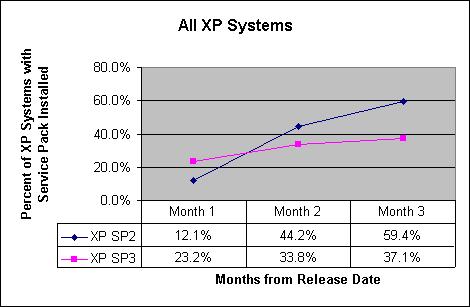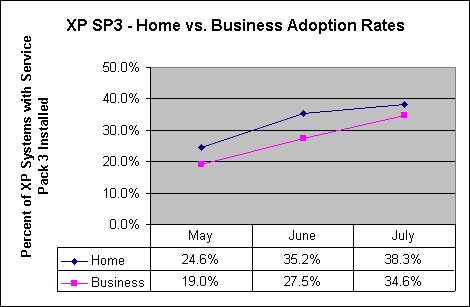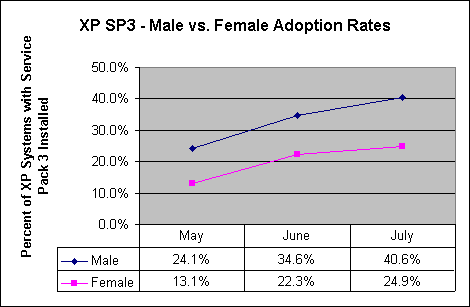Since its release in early May 2008, there has been plenty of press concerning the issues with Microsoft’s XP Service Pack 3. Common sense would tell us that such negative press would drastically slow the rate that folks would update to the release. PC Pitstop analyzed the percentage of XP users that have updated their systems to SP3 during the first three months since its release and compared them to the adoption rates of SP2 during its roll out.
Early results indicated that folks were ready to embrace the update. During the month of its release, SP3 adoption rate of just over 23% blew by SP2 initial month’s rate at a margin of almost 2X. Then the reports began circulating. Not surprisingly, months 2 and 3 have showed a significant slow down in the adoption rate of SP3. While SP2 had reached almost 60% of total XP systems during the first three months of it release, SP3 attach rate came in at just over 37%. To Microsoft’s credit, there have been millions of successful installs of SP3. Considering all the combinations of third party hardware. software and configurations of today’s PCs, it still amazes me that compatibility issues are not more of a problem.
Comparison of XP SP2 and SP3 Adoption

We also thought it might be interesting to see how different segments and demographics are embracing the new service pack. Generally, business are slower to implement change, which is the case with SP3. However, it is a bit surprising of the small amount of difference between the adoption rate of Home and Business systems.
XP Service Pack 3 Adoption – Home vs. Business

Our analysis of adoption rates by gender show that females are much less enthusiatic about updating to SP3 than males.
XP Service Pack 3 Adoption – Male vs. Females





